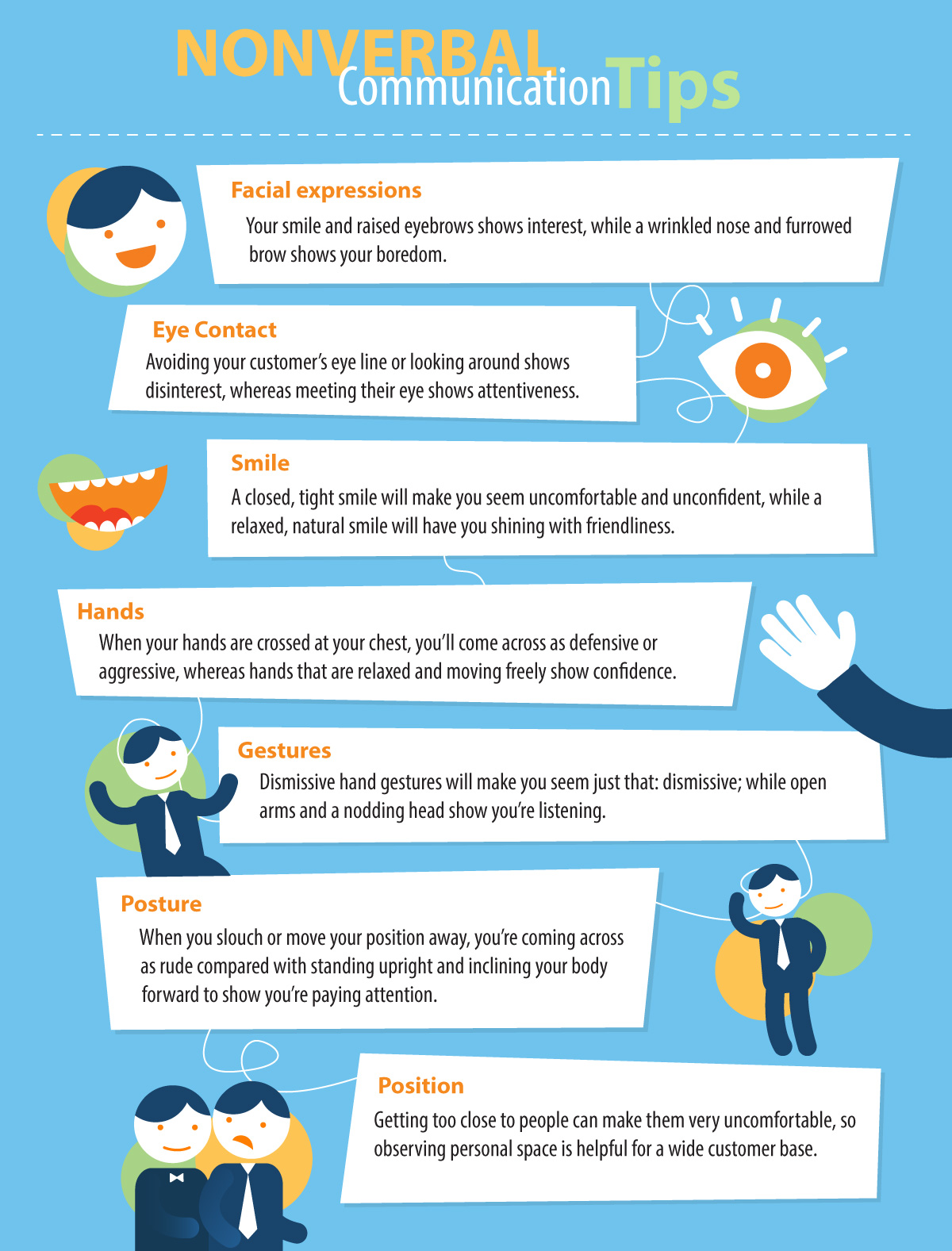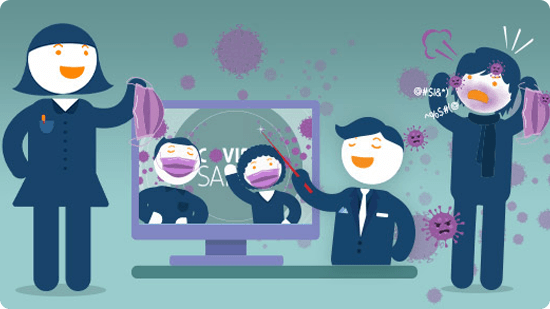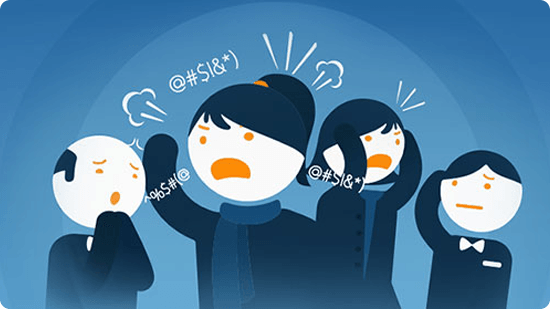So, you’re an expert on how to walk the walk and talk the talk when interacting with your customers: your sales pitch is witty and clever, your arguments are compelling, and your first impression on others is confidence. But are you aware that your slouchy shoulders and crossed arms can make you seem abrasive? Or that smiling while an angry customer complains to you is actually infuriating them?
Non-verbal communication – including body language, space between communicators, eye contact, posture, facial expressions, gestures and vocal cues – all play a vital role in the relationships we form with customers.
These cues and signals are learnt in childhood and can be used on their own or along with verbal communication. Either way, your non-verbal communication can both change and enhance what you’re trying to express, along with your relationships and cultural understandings.
Looks, Gestures and Spatial Awareness

Non-verbal communication is able to convey information about a person’s emotional state, define relationships, provide feedback and regulate the flow of conversation. These signals can also be used to complement, emphasise, substitute, and contradict what you’re saying, as well as help you understand another person’s unspoken feelings and clarify what they’re trying to express.
For example: sitting with an erect posture and facing a person when conversing shows receptiveness, whereas slouching and looking the other way shows a lack of interest. A person’s eyes will give away true feelings of boredom, affection, hostility, attentiveness and more, while the amount of space between two people can speak volumes about their relationship.
Think about some of your non-verbal cues: do you roll your eyes when annoyed? Do you nod your head to show you’re listening? Do you keep your hands folded to your chest or moving loosely around you?
If you’re not aware of your non-verbal cues and signals, you’ll have no clue as to how you’re coming across to others and in the customer service industry this self-awareness is essential.
Communicating with Customers

In a customer service setting, it’s important to have awareness on non-verbal clues and signals, so you’re able to read your customers before they even ask for what they want. This sensitivity helps you have a better reading of your customer’s feelings, and creates feelings of trust through the transparency of non-verbal communication.
Here are a few points about non-verbal communication to keep in mind when communicating with customers:

Being Aware of Your Ticks
As I’m sure you’re already aware, customers come in all different shapes and sizes, so once you’re conscious of your particular flair of non-verbal communication, you can begin tailoring it to suit any personality type. After all, it’s a lot easier to control what you’re going to say, now you need to control how you’re going to say it.
Canity has outlined how to handle driver, expressive, amiable and analytical customer personality types, so now you can go away and think on how your non-verbal communication can be tailored to whoever walks through your doors!













